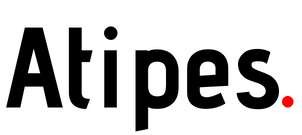Time to Break the Rules of B2B Marketing: How Hiver Drives Innovation With Content
The firehouse of content we see each day is shaping us to be more selective about what we devote our attention to.
So it comes as no surprise that the sooner we start crafting content that’s suited to the ways today’s audiences prefer to consume it, the better our chances of growing alongside these behavioral changes.
We sat down with Mohita Nagpal from Hiver to learn more about innovating with content marketing, brand repositioning, and finding a balance between qualifying MQLs and SQLs in today’s overly-saturated market.
Ready to dive in?
Is Your B2B Content a Snooze-Fest?
Business-to-business marketing has a reputation for being rather boring.
As a leader in the helpdesk space, Hiver – a Gmail-centric customer service solution – knows that B2B is not (and should not be) an excuse for being boring.
Businesses in that space, however, tend to play it safe. Mohita Nagpal, VP of Marketing at Hiver, shares: “they tend to default to what everyone else is doing. So if your content is for business, it’s supposed to sound professional and that gives them the leeway of being boring. But do you really want to read all of that?”
While some industries, such as legal services, may be able to pull off a more formal tone and style, for the majority of B2B, it’s important to remember that you are still speaking to real people.
“There’s a lot of scope for more empathy, humanness, and fun in B2B” Mohita adds, and forgetting this means missed opportunities to make personal, relevant connections with your prospects.
The key takeaway? Figure out who is actually consuming your content, find their preferences and pain points. Together with providing excellent service and consistent communication, you’ll be able to better optimize the customer journey and create engaging content that actually helps them solve their problems.
The Changing Face of Content Marketing
The marketing space is shifting fast, and we can no longer afford for our content marketing to be bland.
Messages that once seemed powerful and used to rank high in the SERPs now feel obsolete. Mohita shares: “The first blog post I wrote for eCommerce started ranking and within 2 weeks it was on page one. Back then I thought this is how it’s supposed to be. Now I look back and I think ‘that was magic’.”
Today’s consumers have changed, as well. The buyer’s journey is much more complex, buyers are better informed and have higher expectations about the quality of content they consume.
Competition for the Attention of Prospects Is Getting Fierce Too
No matter what your niche is, at the end of the day, we are all competing for the same thing: the attention of customers.
Although people’s attention span being less than that of a goldfish is a myth, the fact is that you are still competing with many distractions while your audience sits on their computers/mobile devices.
This holds especially true for webinars and ebooks. Mohita elaborates: “People’s capacity to concentrate on anything (or read) for that long is reducing. Webinars used to be really long back then but right now people are consuming information in bite-size nuggets.”
Mobile devices have contributed to the behavioral shift of consumers, as well. Today, nearly everything is instantaneous and people want to consume content that way.
How to Innovate and Cater To the Modern-Day Attention Span
The future of SaaS marketing belongs to innovators.
While you still need to nail the basics, such as having a solid SEO and content marketing plan, when your goal is to attract new customers, subscribers, or links, you need to do something exciting to grab the spotlight.
As Hiver’s marketing VP points out: “The channels are getting saturated so you have to innovate the existing ones. You have to really define who’s ultimately reading your content, who’s consuming, who’s making the decision.” A great place to start is by using customer service data for growth and strategy creation. After all, your customer support channels, such as social media, phone, and email, are fantastic data sources that can help you dive deeper into conversations and discover useful trends.
Let’s take a look at two more ways that can help future-proof your content strategy.
Find New Ways to Communicate Your Ideas
Webinars are still a good medium to establish an authentic relationship with prospects.
Mohita’s webinar experience started back in early 2014 when “webinars were just catching on and you’d easily get like 8000 registrations. Now it’s all saturated, it’s very, very hard to differentiate from the rest with so much competition.”
To stand out from the crowd, be sure to consider the needs of your target audience, make the webinar interactive, and demonstrate the solution to your prospects’ struggles.
The more in tune you are with what your audience wants, the more aware you’ll be of the difference between having a “webinar that’s just long enough to give viewers what they need to know” and “a webinar that just wouldn’t end”.
If your content seems to be falling a little flat, cropping and repurposing bits of it might be an excellent option. Mohita gives an example: “We had a webinar with an influencer in our space. It was 30 minutes long, so we divided it into chunks, like 2 to 3 minutes long. We took out those nuggets and promoted them on LinkedIn for better engagement. We know that putting it behind a wall doesn’t matter. We want to give people value.”
Ultimately, what people want to consume, especially on their mobile devices, is snackable bits of content. This all means that, to build a more effective content strategy, repackaging and communicating content in formats people like needs to be on your to-do list.
Putting this all together – as long as you’re providing value to the audience – you can efficiently reuse content and, at the same time, grow traffic with limited content resources. You can repurpose content pieces in many ways, such as:
New blog posts
Infographics
Instructographics
Short videos
Email series
Podcasts or video series
Tell a Story
A good story lights up your brain in the same way pleasure does. Even more impressively, stories can activate seven regions of the brain, making them inherently more effective at changing beliefs and behaviors than facts and dry statistics.
Good storytelling illustrates your innovation process through authentic, emotive stories. In turn, sparking the imagination and maximizing the emotional impact through content can be immensely helpful for guiding prospects down the sales funnel.
For a brand story to work, however, it must go above and beyond the brand’s products or services. You need to create something that your customers want to be a part of, something that shows them that you understand who they are and what they need.
To tell a better story, you’ll need to:
Have a clear purpose
Make it relatable
Illustrate the key takeaways
Follow a (loose) storytelling framework
Hiver’s Path to Repositioning: From Shared Inbox to Helpdesk
As brands evolve over time, repositioning is almost inevitable. Just last year, Hiver repositioned itself from a shared inbox solution to a helpdesk solution.
Our CEO Paris connected with Mohita to find out more. “We always called ourselves a shared inbox solution and it’s a very tactical way of saying what we do”, she shares, “and we also started seeing a lot more competition popping up in the same category so that was a positive affirmation; we were moving in the right direction.”
The most effective rebranding strategies start with research into current brand perceptions, both of external and internal stakeholders. For Hiver, “ultimately, it was looking at our own customers that propelled this decision that we have to go forward and reposition ourselves.”
A common reason to rebrand is wanting to differentiate from the competition and showcase the things that make your product better than the rest. Mohita elaborates: “Even though we always knew that we catered to everyone, the majority of use cases, 60 – 70%, was customer service; B2B services.”
Naturally, these use cases have more complex types of issues and more variance in the support that’s needed, and that’s where Hiver saw a huge competitive advantage opportunity. “A typical helpdesk didn’t satisfy them [use cases]. It was not something they needed because the way typical helpdesks are built is to close tickets whereas Hiver was built to enable seamless conversation”, Mohita adds.
One of Hiver’s core principles and main differentiators is its simplicity. “Everyone keeps talking about how simple it is to use, how easy it is to get started and I think by working within Gmail it all gives us that advantage. Any other solution, if it’s working outside of Gmail, it’s not going to be as seamless. Just being within Gmail enables that simplicity and we obviously latched onto that positioning because it also gives us a competitive advantage.”
The Keys to Engagement: ABM, PLG, and On-Demand Content
Account-based marketing (ABM) and product-led growth (PLG) are perhaps two of the most buzzworthy topics today. The trend of combining ABM with PLG is a fundamental shift in how we’re generating leads.
Skilled and adaptable SaaS businesses are already focusing on this combined strategy and tossing out the one-size-fits-all approach.
Hiver, however, is taking this strategy to new innovative heights. On the brand’s website, prospects can request a demo, start a free 14-day trial, or access an on-demand webinar.
This is a fantastic example that you don’t have to split between either driving people into a free trial or a demo. Rather, there’s something in the middle.
Essentially, Hiver has taken some of the content from what would commonly be shown in a demo and packaged it into a 9-minute on-demand webinar, effectively generating MQLs from those video views.
So how are these tactics affecting the ratio of initial conversions?
Mohita gives us a glimpse: “The percentage of those converting from the demo is higher. After that, it’s through the on-demand webinar and maybe after that the free trial but there’s not a huge difference.”
Even though they are heavily focused on product-led growth, she adds that “with every trial that comes in from either of these 3 mediums, we have a sales team who speaks to them. So every trial is spoken.”
To streamline operations and run more efficient sales conversations, Hiver has built an in-house team of data analysts who use various enrichment tools to gather prospective customers’ insights. That said, they also “check all of these emails manually. It is old-fashioned, but we do this in-house because we are very particular about not spamming people. We try to be analytical with everything we do.”
Investing in a Compelling Content Strategy Pays Off
In today’s ever-changing world, one-size-fits-all marketing fits no one. To evolve your content in tandem with people’s evolving preferences and attention spans, seeing change as an opportunity will be your greatest strength.
At the end of the day, people’s undivided attention can be captured as long as you provide them with the right bait – engaging, relevant content that features highly compelling stories.
Ready to get started? Take a look at our content marketing services and see how we can help your brand climb to new heights.
©Copyright 2023.All Rights Reserved.
Disclaimer : This advertisement and the information related to it are provided and maintained by the advertiser. Atipes.com is not responsible and can not guarantee the accuracy or completeness of this advertisement. Please note that every advertisement for rent or for sale should at a minimum, display the energy performance rating of the property. See our Flats and Housing Posting Rules for more information.
Avoid scams: Signs of fraud: wire transfer, money orders, cashier checks, payment via gift cards, shipping, escrow, "transaction protection", "guarantee". Be safe by dealing locally.

